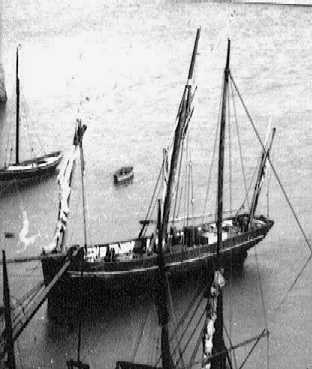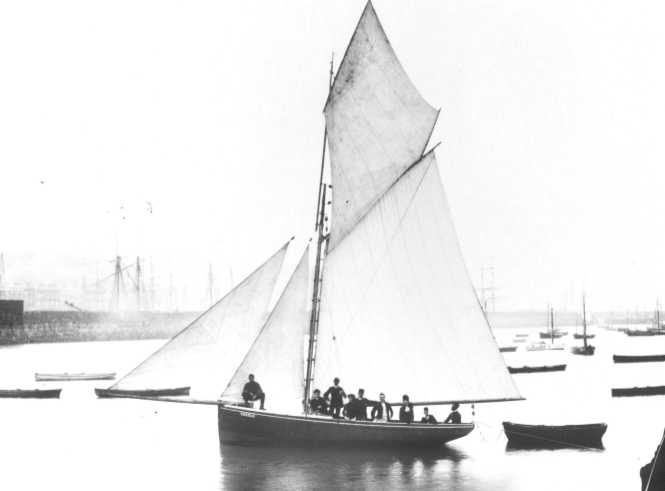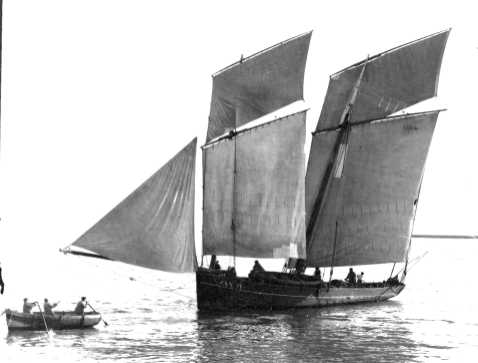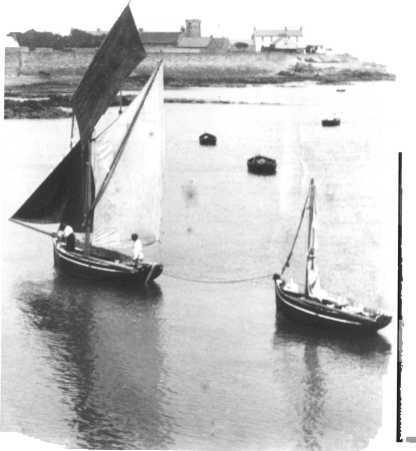|
|
|
An Outline History of Jersey Boats
Before the 19th century local vessels were largely the same as those found on the nearby coast of the Cotentin and North Brittany - principally canots, chaloupes, flambarts and dories.
Localised boat design is a response to local conditions: hull shape is determined by the sea conditions and work requirements while the rig is heavily influenced by work requirements, size of crew and ease of use. Few boat designs remain static - they change or develop in response to the changing demands of their owners/crew and over the years invading or visiting boat designs were copied and modified by local fishermen to suit local conditions.
The few contemporary written references to local vessels produced prior to the Napoleonic Wars indicate that island boats were French in design and often built. The illustrations of the period (paintings and prints) also support this and the Jerriais words for these vessels are also derived from the French:-
berque barque
bistchinne bisquine
chaloupe chaloupe
The exception to this is the cotteur, derived from the English cutter and not the French cotre: it has been suggested that this small difference throws light on a major change.


The prevalent rig in the Channel Islands prior to the early 19th century was the three masted hull rigged with standing lugsails later to be developed as the chasse marée. This craft had developed from the square rig with the main-mast amidships. A foremast was added to counter weather helm and the small mizzen was often set up to keep the craft's head into the wind while hauling lines or nets - it also provided extra power. During the 19th century a recognisable Channel Islands rig developed which saw the lugsail being replaced by a boomless gaff-sail with a very high cut peak. These powerful craft were designed to cope with the strong tides and powerful currents prevalent in local waters. The considerable spread of canvas obtained on the three masts was vitally important to get home in light conditions against the tides and more especially it was a rig that could be reduced rapidly in heavy weather.
Various developments of this rig can be seen throughout the region from the chasse-marées and flambarts to the bisquines of Cancale and Granville and the Guernsey three masted mackerel drifter. Jersey diverged from this regional tradition in the second half of the 19th century in that almost all island based boats became cutter/sloop rigged - that is fore and aft rigged but with the mainmast forward of amidships.


The cutter rig was seen throughout the south coast of England and the Channel coast of France and was brought to the island by the great numbers of Essex oyster smacks that came to exploit the oyster beds just after the Napoleonic wars. These beds, marked on Dumaresq's map of 1685, were undoubtedly exploited by islanders before that but during the 1790s English oyster fishermen began to dredge them and a thriving industry developed. Instead of continuing to absorb regional French boat design influences, Jerseymen were living in the midst of an invasion force of very efficient English rigs and so, in order to compete, island fishermen adopted the English cutter rig but retained the local hull shape
Different sizes of topmast were used for winter and summer conditions, In the summer a longer, lighter topmast was hoisted and a topsail yard added. A popular size for the decked fishing craft was 40' by 12' (12m x 3.60m) which would be about 20 tons.

The effectiveness of the cutter rig has often been overplayed locally and it has sometimes been said that the success of the Jersey cutters lead to the disappearance of the bisquine or chasse marées from most of the northern French coast. However, it must be remembered that the gaff rigged cutter rig was common on both sides of the English Channel and that, in this part of the region, once the fishing industry changed then the type of vessel used changed out of necessity. The fact that there was still an active bisquine fleet sailing out of Cancale around the time of the Great War when Jersey's oyster fleet was non-existent says a lot about the effectiveness of the bisquine design.
Design features of Jersey boats


Jersey's beach boats are often referred to as La Rocque built but this term described a specific type of fishing boat rather than the location of its manufacture. They were similar to the Itchen Ferry boats in shape as their maximum beam was amidships at the waterline but then it moved threequarters aft midway between the gunwale and the waterline. This took effect when the boat was heeled and meant that these boats were easily driven when the wind freshened.
There were two sizes in common use - the 14' and the 18'. Both were strongly built with shallow draft drawing about eight inches forward and a foot aft. The marked drag in the keel also helped when driving to windward. There was no standing rigging, centre-board or boom. The hard turn to the bilge enabled her to stand up in a blow and a hollow waterline forward cut a fine entry. The hull wighed about seven to eight hundredweight (c800lbs) and had about 80lbs ballast - this could either be clay or beach pebbles. The original rig was a sprit sail but this was often replaced by a standing lug.
Return to
Patrimoine